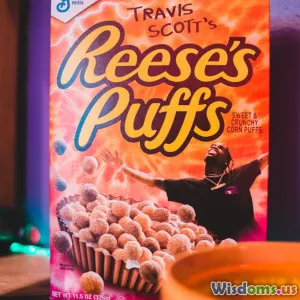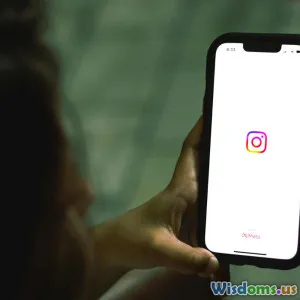
Will Virtual Influencers Replace Real Fashion Models Soon
13 min read Explore the reality and myths behind virtual influencers and their potential to replace traditional fashion models in the digital era. (0 Reviews)
Will Virtual Influencers Replace Real Fashion Models Soon?
Introduction: When Avatars Wear Couture
What if the next face of your favorite fashion brand isn't real? Picture an Instagram feed where the latest haute couture is draped over pixel-perfect avatars who don't age, tire, or demand makeup breaks. This isn't science fiction—it's the blooming reality of virtual influencers, digital personas engineered to generate followers, traffic, and even profits.
But in this tech-driven catwalk, can computer-generated icons truly replace flesh-and-blood models who’ve spent decades defining beauty, culture, and aspiration? As the boundaries between the virtual and the actual blur, the fashion industry is standing at a crossroads that could redefine what it means to be a ‘model.’
In this article, we'll delve into the meteoric rise of virtual influencers, the current state of real fashion models, and the underlying question: Will virtual influencers really replace real models soon? Or is a hybrid future unfolding before our eyes?
The Meteoric Rise of Virtual Influencers
Digital Personas Born for the Fashion World
A virtual influencer is a computer-generated character designed for social media stardom. These avatars possess not just perfect faces and trendsetting style, but also relatable personalities, carefully-engineered backstories, and a curated public image. The most famous among them include Lil Miquela (@lilmiquela), Shudu (@shudu.gram), and Imma (@imma.gram), each boasting hundreds of thousands to millions of followers.
Fact: As of 2024, Lil Miquela alone has 2.6 million Instagram followers, gracing the digital spaces of global fashion elites.
Brands like Balmain, Prada, and Calvin Klein have already featured virtual models in their campaigns. These digital influencers attend ‘virtual’ fashion shows, engage with fans, and even appear on the covers of top magazines. Imma, for example, was the digital face of Valentino’s “Collezione Milano” during the pandemic when live shows halted.
The Data Behind the Trend
- Market Value: According to Influencer Marketing Hub, the virtual influencer market is projected to surpass $14 billion by 2025.
- Audience Engagement: Data from Hype Auditor shows virtual influencers enjoy up to 3x higher engagement rates compared to human influencers in similar follower brackets.
- Adoption: 46% of Gen Z consumers said they followed at least one virtual influencer, with major traction in the United States, Japan, and Brazil (YouGov 2023).
Clearly, this isn’t a passing trend.
Why Brands Are Flocking to Virtual Avatars
Cost-Effectiveness and Creative Control
Human models need compensation, travel, accommodations, and, importantly, time. CGI avatars cost upfront, but don't get tired, don't require contracts, and can be styled or posed in limitless ways without constraints of real-world physics or schedules.
Quote: “We can put Shudu anywhere in the world, at any time, in any outfit, and make it work for our branding goals in seconds.” – Cameron-James Wilson, Creator of Shudu
Virtual influencers never age, fall sick, or have off-days. This reliability and flexibility allow brands a new level of creative control untethered to real-world limitations.
Fresh Narrative Possibilities
Brands now build entire campaigns around stories—virtual influencers can have fictional travel journeys, personal struggles, friendships, and aspirations that hook audiences across platforms. Imma, for instance, shares thoughts on technology, AI ethics, and art, softening her ‘digital’ edge with authenticity.
Navigating Social Change and Controversy
A digital face reduces risks of influencer scandals, PR mishaps, or legal liabilities from contractual disputes, misconduct, or divergent beliefs. For brands risk-averse to real-world drama, virtual models offer attractive solutions.
The Resilience and Evolution of Real Fashion Models
More Than Just a Pretty Face
The best models are cultural icons. They bring authenticity, heritage, and emotional depth. From Naomi Campbell’s powerful runway presence to Gigi Hadid’s relatable off-duty style, real models create connections virtual avatars can only attempt to mimic.
Representation and Societal Impact
Recent movements—such as more inclusive sizing, racial diversity, and gender fluidity—owe their progress to real individuals courageously standing up for representation within fashion. Adut Akech, a refugee-turned-supermodel, or Jillian Mercado, a model with muscular dystrophy, break down barriers with every campaign. How can a digital placeholder replicate their real-life challenges and triumphs?
Experience and Human Adaptability
Runways are unpredictable: wardrobe malfunctions, live interviews, dynamic photo shoots. Veteran models respond intuitively, oozing charisma and presence that aren't easily coded. In-person storytelling—face-to-face with photographers, stylists, or at events—remains a cornerstone of luxury branding.
Quote: “Models translate concepts into emotion. No technology can perfectly capture a uniquely human spark.” – Sara Ziff, Founder, Model Alliance
Can Virtual Influencers Truly Replace Human Models?
Advantages of Going Digital
1. Infinite Diversity—at a Click
A virtual influencer can be designed to fulfill whatever image a brand needs: any size, color, gender, or physical features. This theoretically promotes representation, but critics argue it can also reduce diversity to a “checkbox exercise.”
2. Globalization and Accessibility
Virtual models transcend borders. They can ‘walk’ virtual runways broadcast from New York to Shanghai, engage fans worldwide, and pioneer cross-market trends instantly. Their appeal is broad and adaptable, even participating in immersive AR or VR fashion shows.
3. Pandemic-Proof Modeling
COVID-19 catalyzed digital fashion weeks and CGI campaigns out of necessity. With unpredictable global events, the ability to operate 24/7 online, without risk of illness or lockdowns, is major appeal.
But There Are Limitations
1. Lack of Authenticity
Fashion is as much about emotion as aesthetics. Avatars can copyexpress human features and gestures, but often lack subtlety and real emotional resonance.
Example: Balenciaga’s digital runway for Spring 2021 used animated models. Critics argued the experience, while visually impressive, felt emotionally distant.
2. Ethical and Social Questions
Who owns the image and rights of a virtual persona? What happens if a digital avatar outputs content that evokes controversy? Deepfakes and synthetic manipulation raise issues—particularly with transparency and trust.
3. Customer Skepticism
Consumers—especially in luxury—demand authenticity. There is unease when brands use ‘fake’ influencers to sell expensive, aspirational items. People crave genuineness behind campaigns, often engaging more with living stories than digital fiction.
4. Impact on Human Creatives
Overreliance on CGI could harm careers in modeling, makeup artistry, styling, and behind-the-scenes crafts. Virtual faces mean fewer jobs for real people unless the industry adapts to hybrid teams.
Industry Leaders Weigh In
Designer and innovator Tommy Hilfiger reflects the ambivalence: “Virtual influencers are exciting, but there’s still magic in working with genuine human models—their spirit, unpredictability, and life inspire our collections.”
A Hybrid Future?: Virtual and Real Models Side by Side
Collaborations in Action
Far from one replacing the other outright, 2024 has seen numerous brands blending realities:
- Prada: Used both Lil Miquela (virtual) and real model Rianne van Rompaey in its Milan Fashion Week lineup.
- Balmain: Created a fictional ‘Balmain Army’ of avatars, paired with real models for campaigns, expanding both reach and imagination.
- Burberry: Launched AR experiences where users style themselves and their favorite avatars together.
Consumer Preferences Shift
A Vogue Business 2023 report revealed:
- 41% of consumers appreciate ‘hybrid’ campaigns featuring both real and virtual talent.
- The under-25 demographic is far more comfortable and engaged with digital influencers, while older generations remain skeptical.
The New Creative Ecosystem
The future likely holds richer collaborations, blending the best of both worlds:
- Real models bring authenticity, adaptability, and lived experience.
- Virtual influencers offer creative risk, scalability, viral storytelling, and technical marvel.
- Brands reap the benefits of expanded narrative tools, from AR try-ons to metaverse events and NFT merchandise.
Potential Consequences and Considerations
Ethical and Social Implications
With great power comes great responsibility. The fashion industry's use of virtual influencers must account for potential pitfalls:
- Representation or Tokenism? Brands must ensure digital diversity isn’t merely a cosmetic checkbox.
- AI Bias: Automated systems that ‘create’ avatars can perpetuate biases in beauty standards or racial representation.
- Economic Impact: Fewer opportunities for human models if wide-scale replacement occurs.
Creative Employment Shifts
- CGI, 3D artists, narrative writers, and data scientists are becoming vital to the “modeling” equation, shifting creative employment patterns.
- Real models with a strong digital presence and brand-savvy will remain in high demand, especially for live, interactive clashes or events.
Regulation and Transparency
Agencies and ad watchdogs increasingly require disclosure when virtual influencers or avatars are in use to maintain consumer trust. For example, the UK’s Advertising Standards Authority ( ASA) in 2024 mandated that posts by virtual personalities must clearly state their synthetic origin.
Conclusion: Evolution, Not Extinction
The short answer: No, virtual influencers won’t fully replace real models anytime soon—but they’re here to stay as a highly disruptive force.
Real models bring stories, passion, unpredictability, social change, and the subtle artistry that tech can’t (yet) code. Virtual avatars drive creativity past practical limits, enabling extravagant visual campaigns and global inclusivity.
Ultimately, the fashion world—defined by constant reinvention—benefits most from symbiosis. Forward-thinking brands will blend human warmth with digital prowess, creating narrative marketing that transcends simple visuals.
What’s Next?
- Expect fashion education to teach both digital craft and traditional skills.
- Watch for regulation updates and ethical standards as brands tread this futuristic path.
- If you’re a creative—model, designer, marketer, or technophile—don’t pick sides hastily: prepare to work in a landscape that celebrates both carbon-based charisma and algorithmic artistry.
Fashion, after all, is driven not just by trends—but by bold possibilities. Where will you fit in the next era of modeling?
Rate the Post
User Reviews
Popular Posts




















